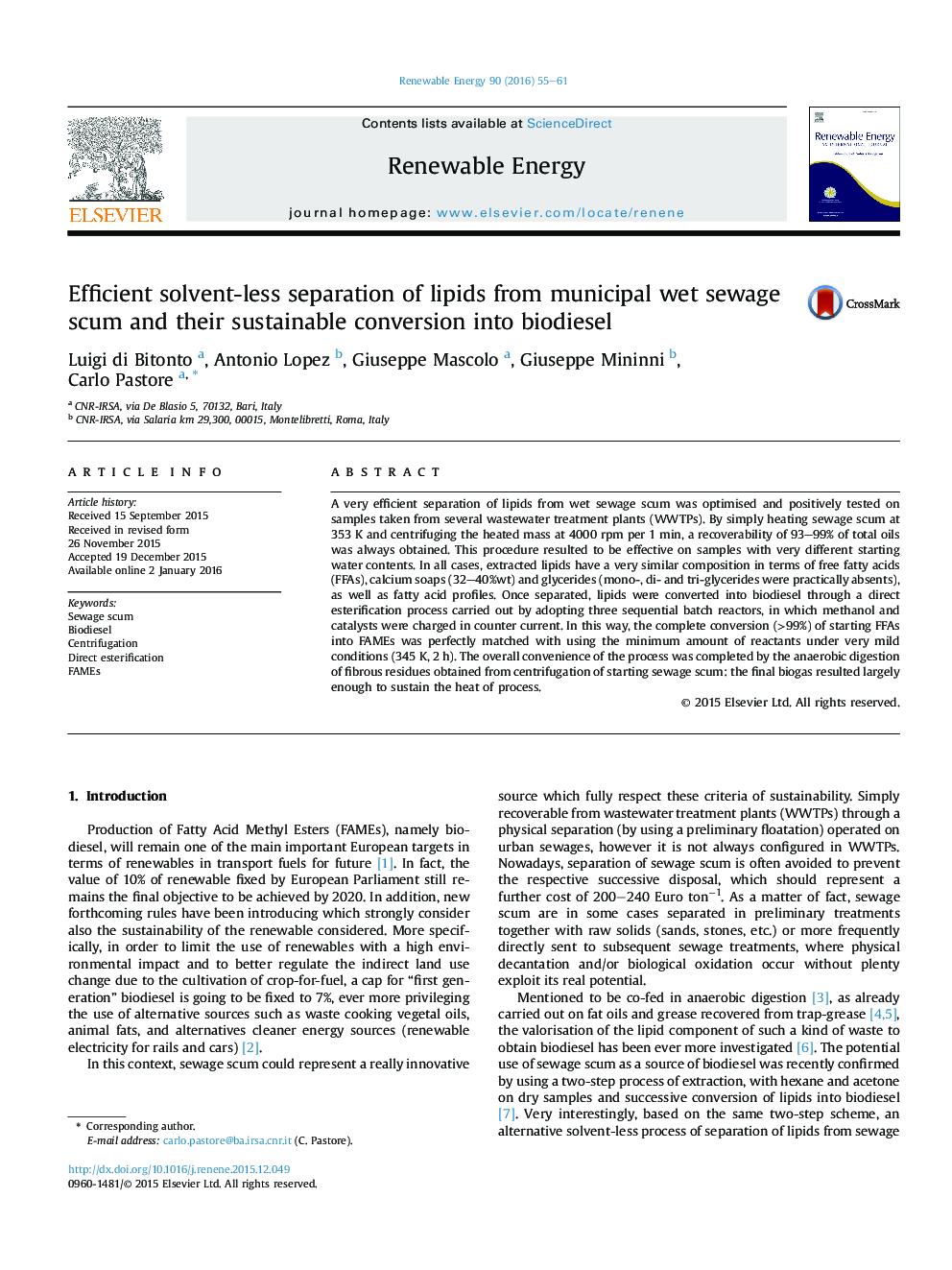| Article ID | Journal | Published Year | Pages | File Type |
|---|---|---|---|---|
| 299810 | Renewable Energy | 2016 | 7 Pages |
•A solvent-less efficient separation of lipids from wet sewage scum was optimised.•Centrifugation of heated raw wet sewage scum recovers 98% of starting lipids.•Complete conversion of FFAs into FAMEs was obtained under mild conditions.•The use of three reactors in counter current pushed conversion of FFAs over 99%.
A very efficient separation of lipids from wet sewage scum was optimised and positively tested on samples taken from several wastewater treatment plants (WWTPs). By simply heating sewage scum at 353 K and centrifuging the heated mass at 4000 rpm per 1 min, a recoverability of 93–99% of total oils was always obtained. This procedure resulted to be effective on samples with very different starting water contents. In all cases, extracted lipids have a very similar composition in terms of free fatty acids (FFAs), calcium soaps (32–40%wt) and glycerides (mono-, di- and tri-glycerides were practically absents), as well as fatty acid profiles. Once separated, lipids were converted into biodiesel through a direct esterification process carried out by adopting three sequential batch reactors, in which methanol and catalysts were charged in counter current. In this way, the complete conversion (>99%) of starting FFAs into FAMEs was perfectly matched with using the minimum amount of reactants under very mild conditions (345 K, 2 h). The overall convenience of the process was completed by the anaerobic digestion of fibrous residues obtained from centrifugation of starting sewage scum: the final biogas resulted largely enough to sustain the heat of process.
Graphical abstractFigure optionsDownload full-size imageDownload as PowerPoint slide
